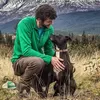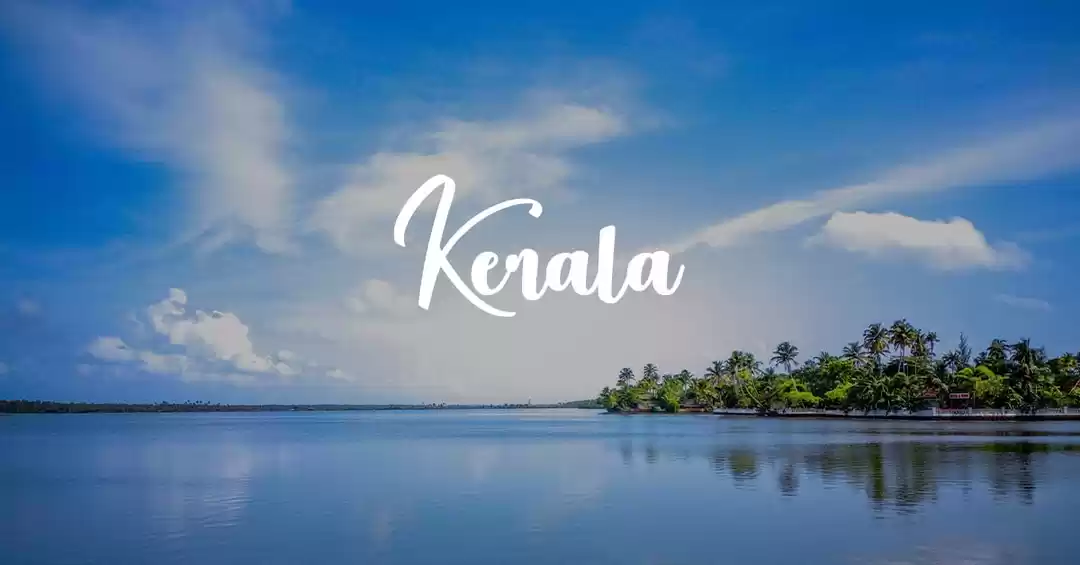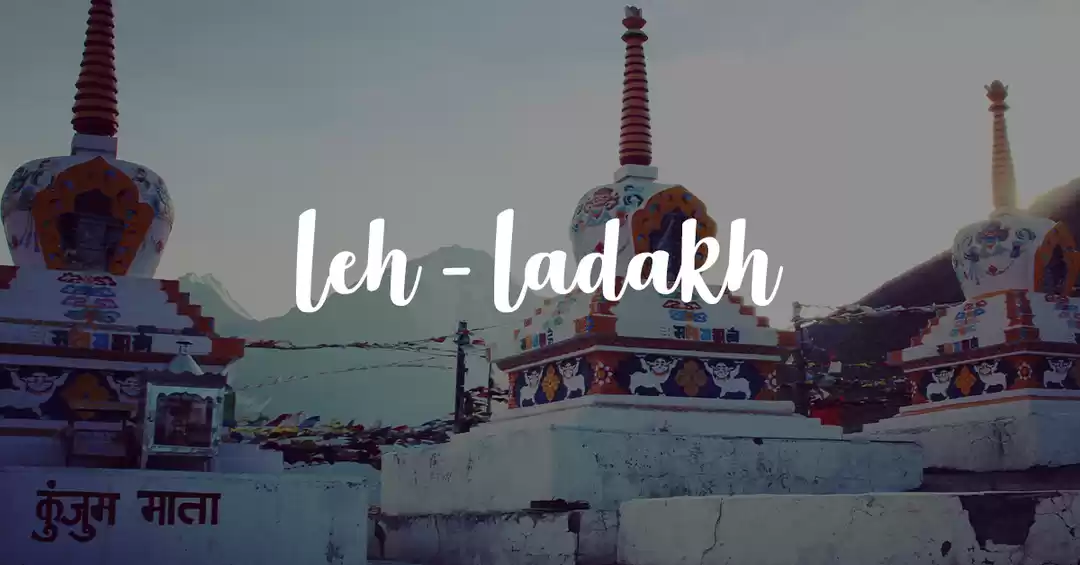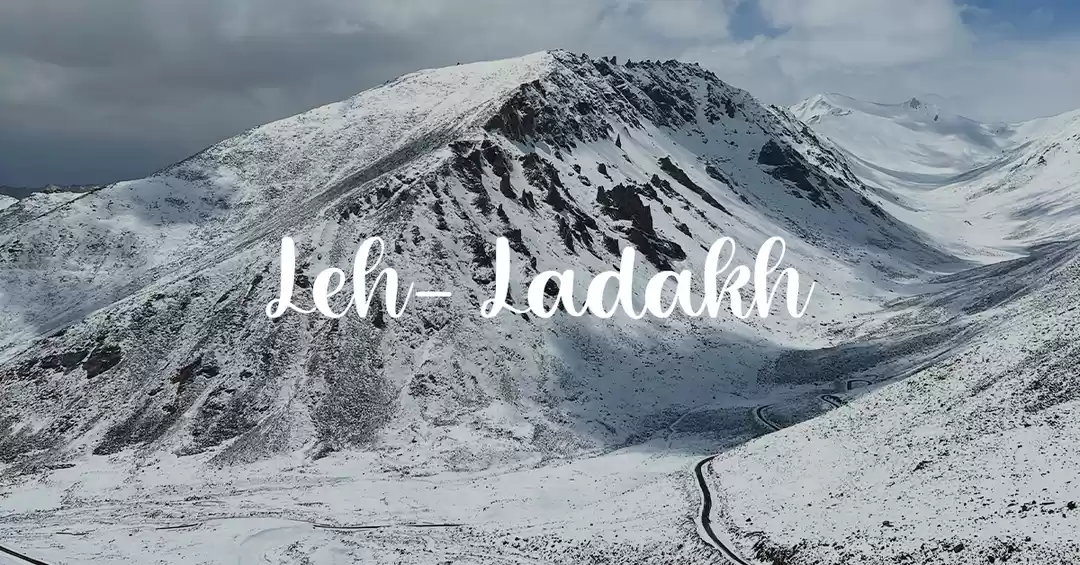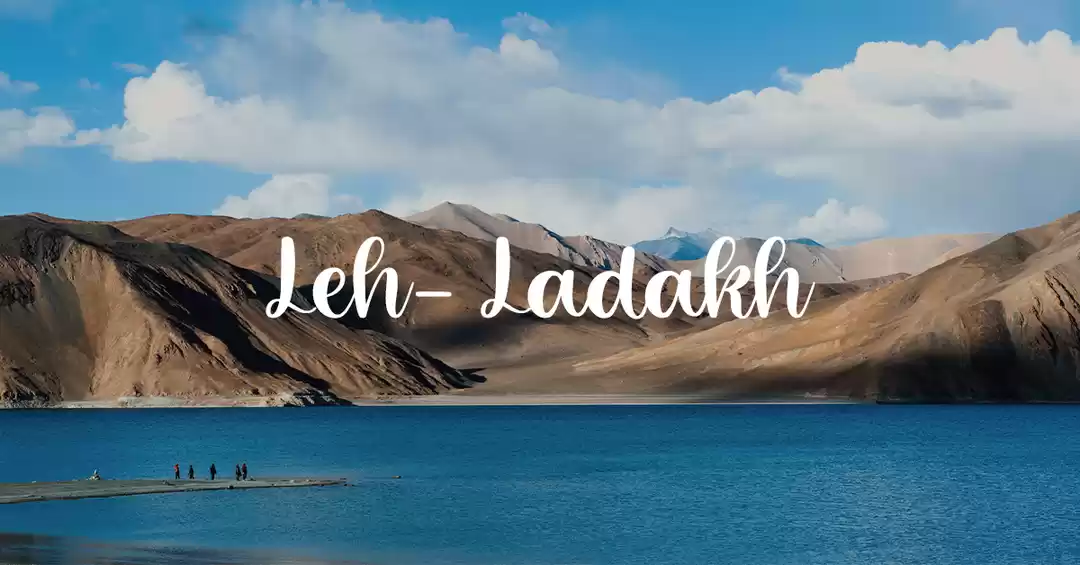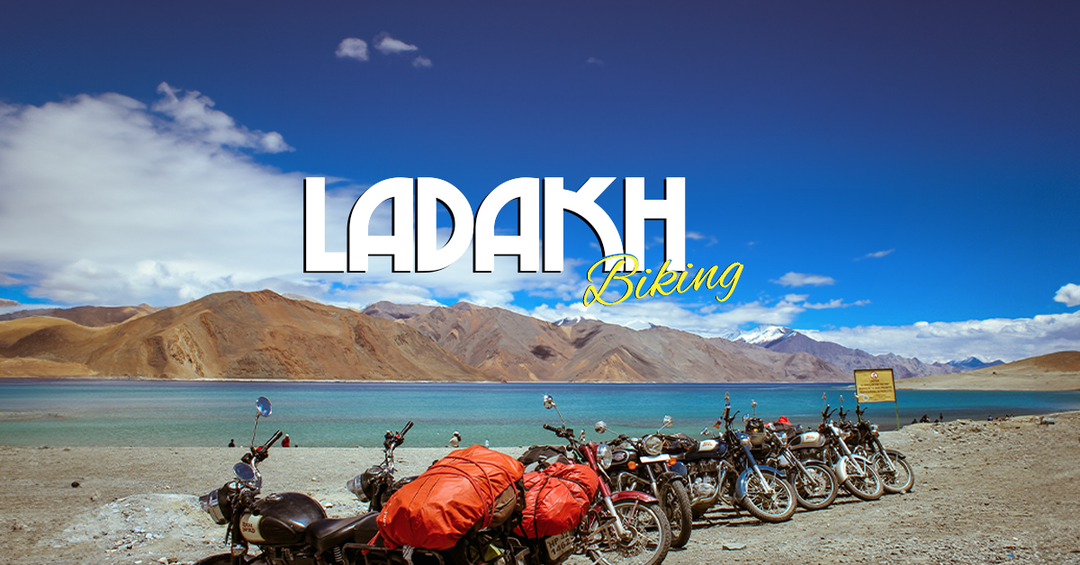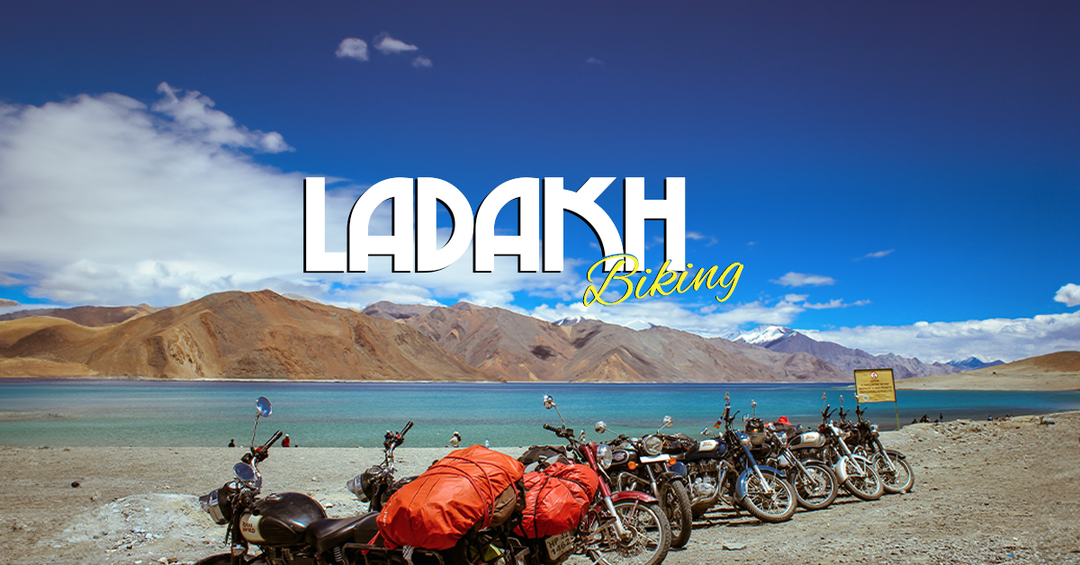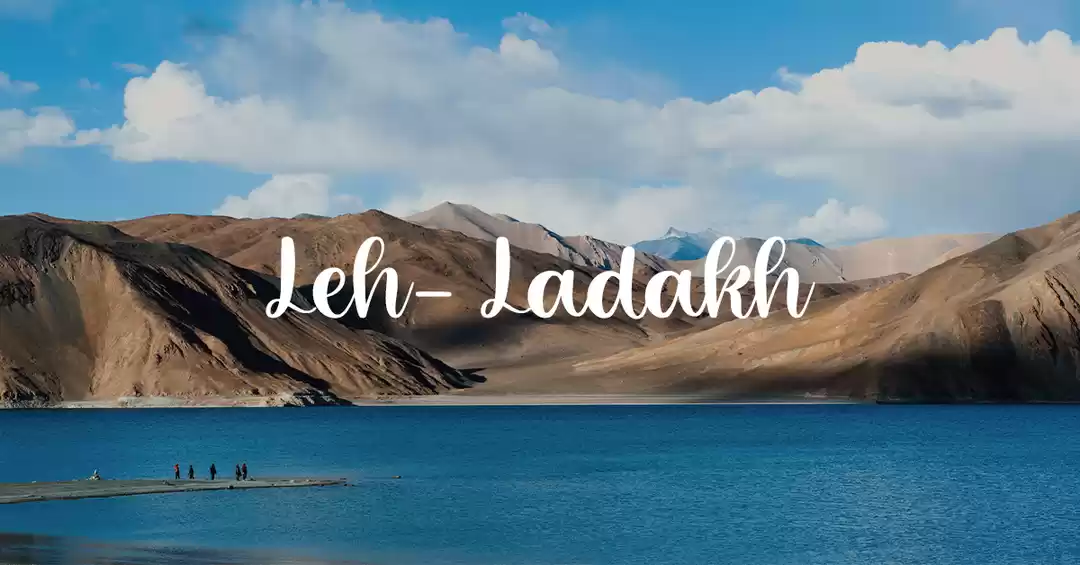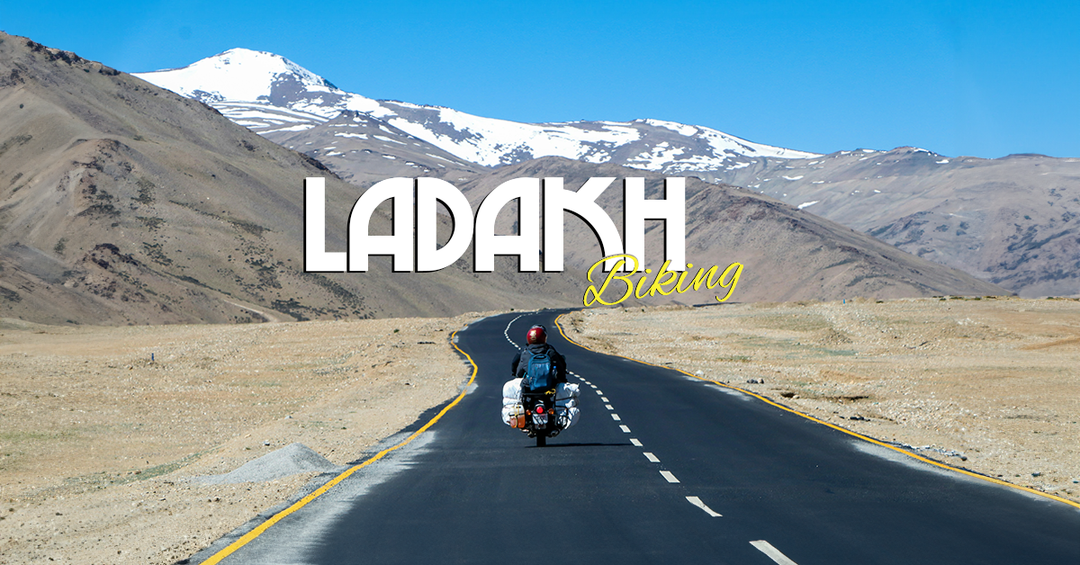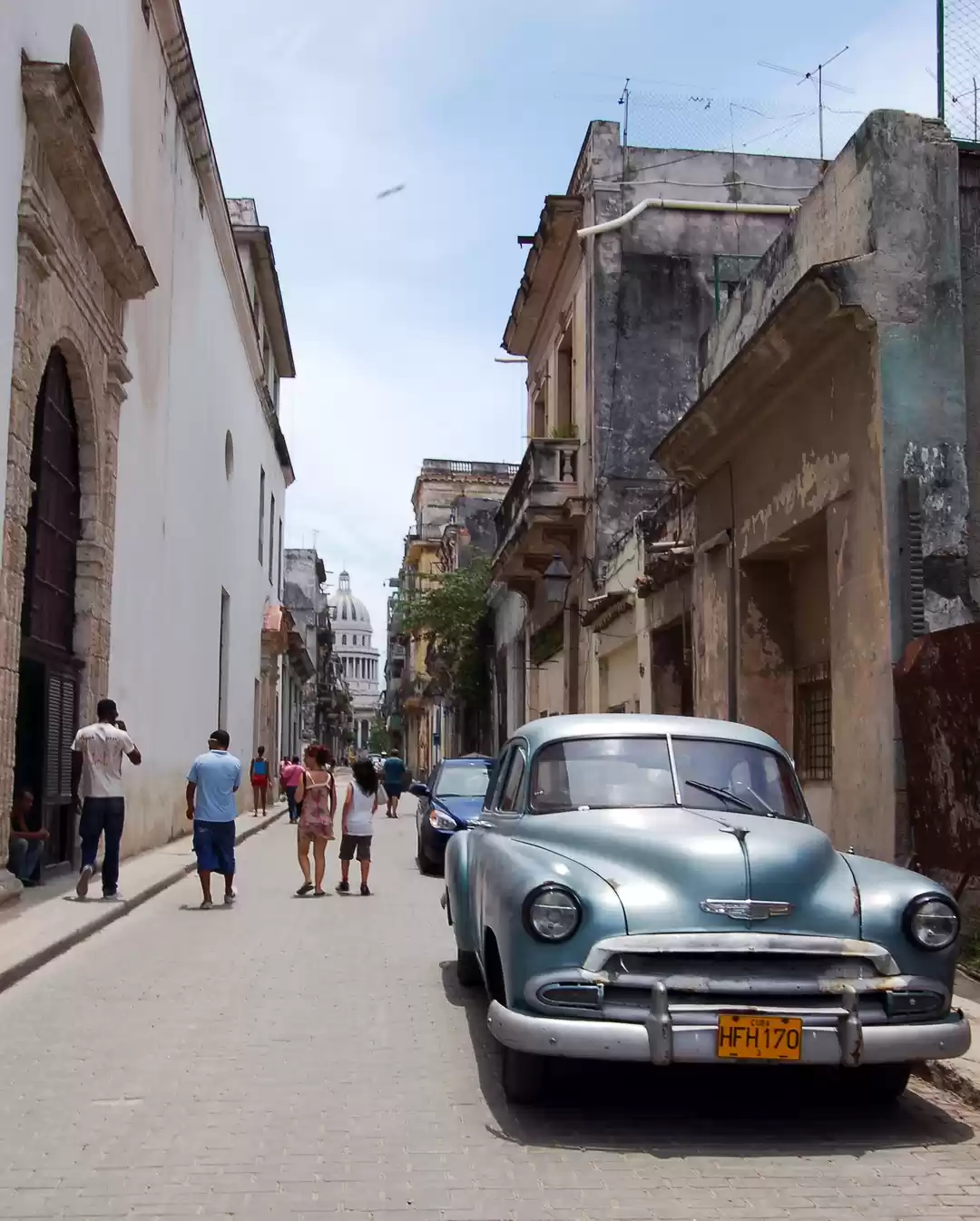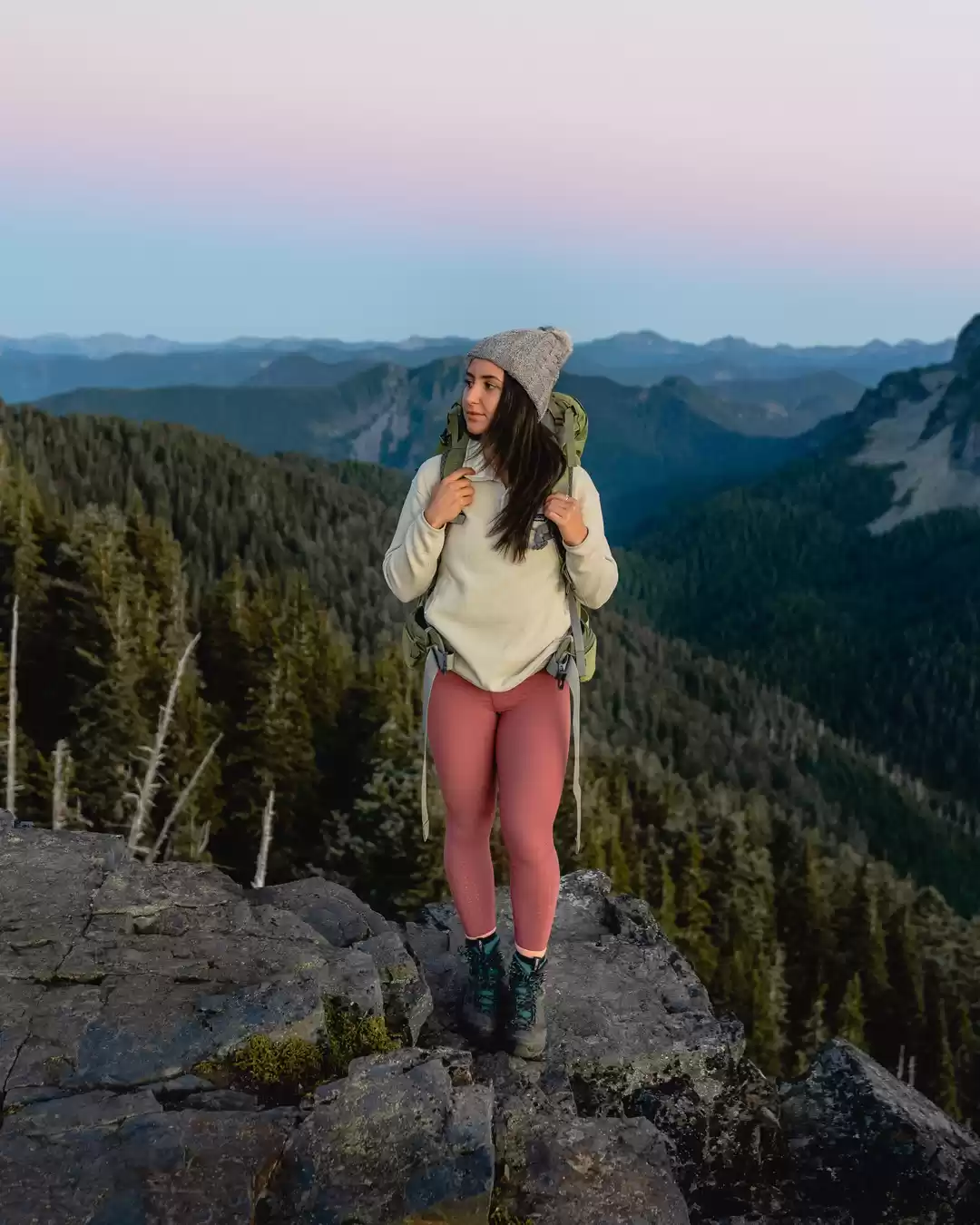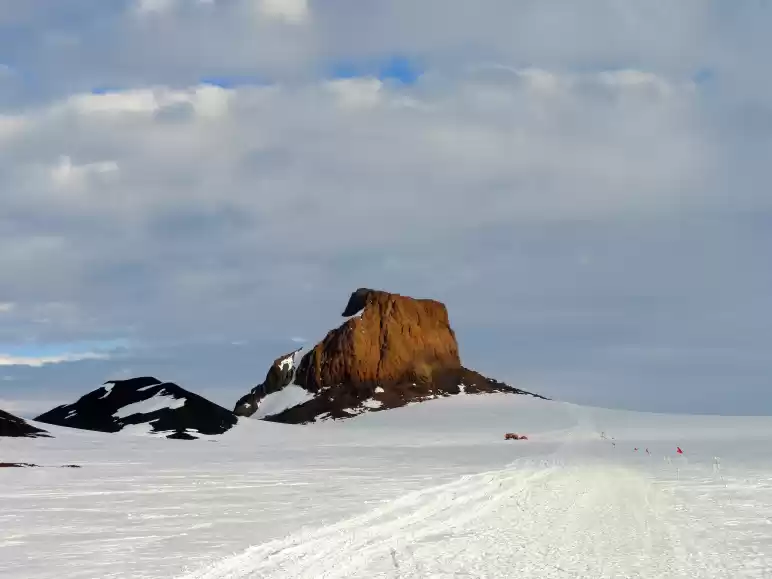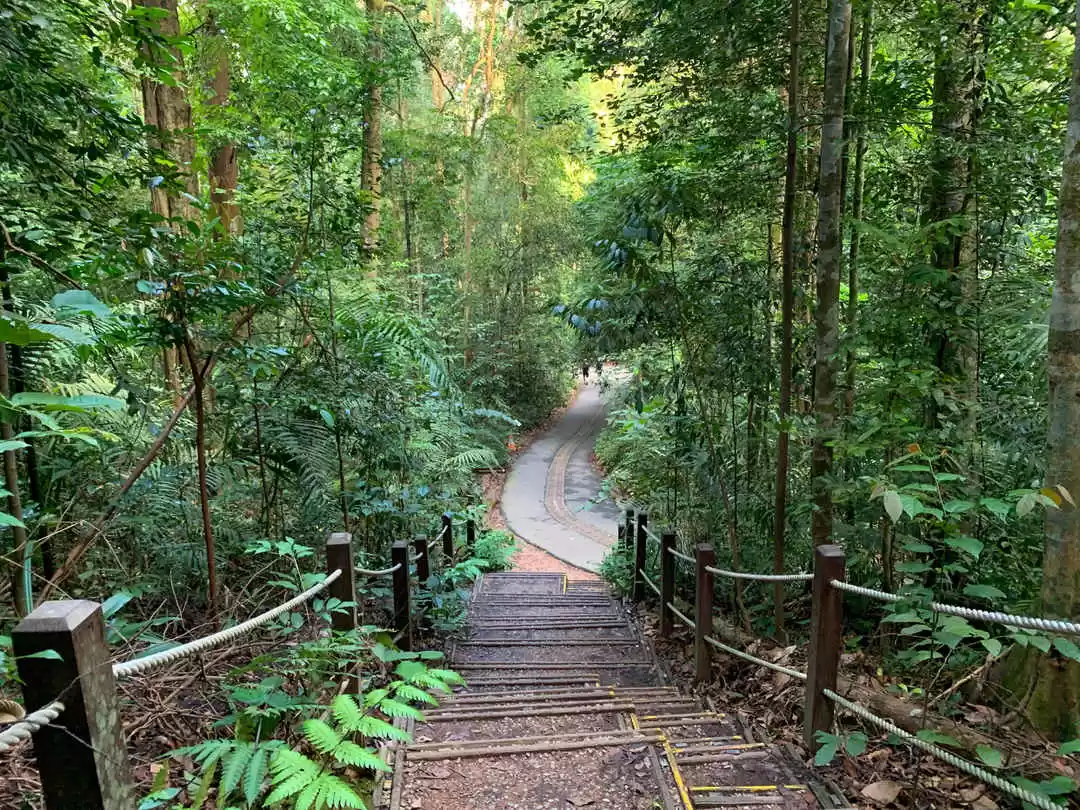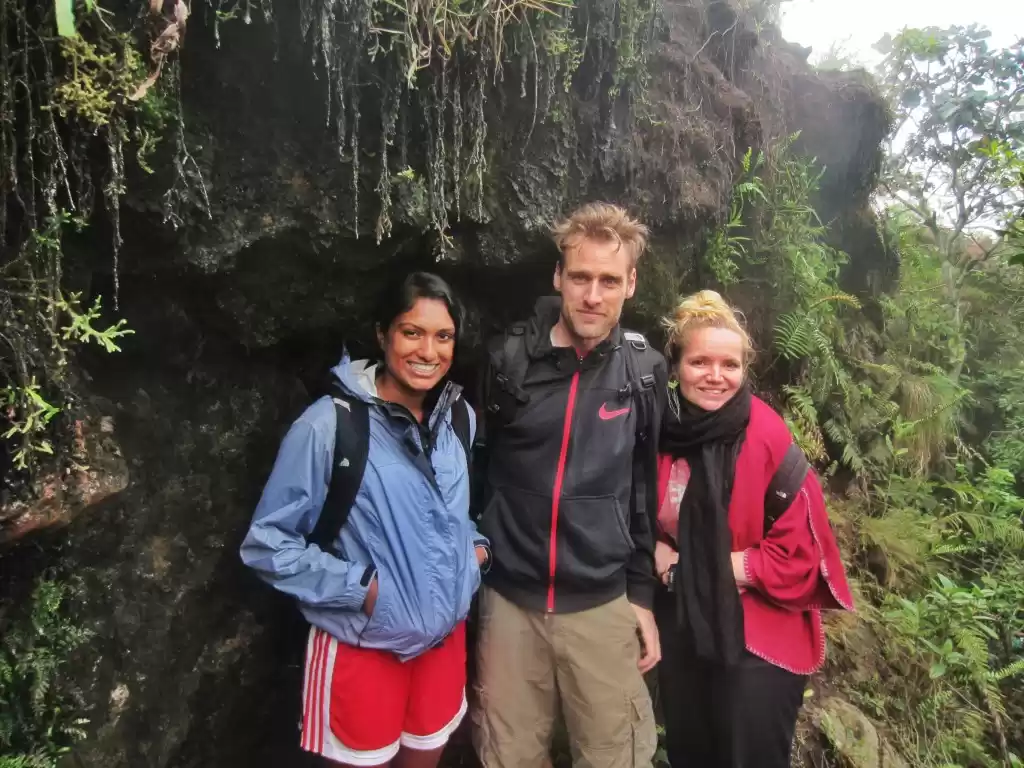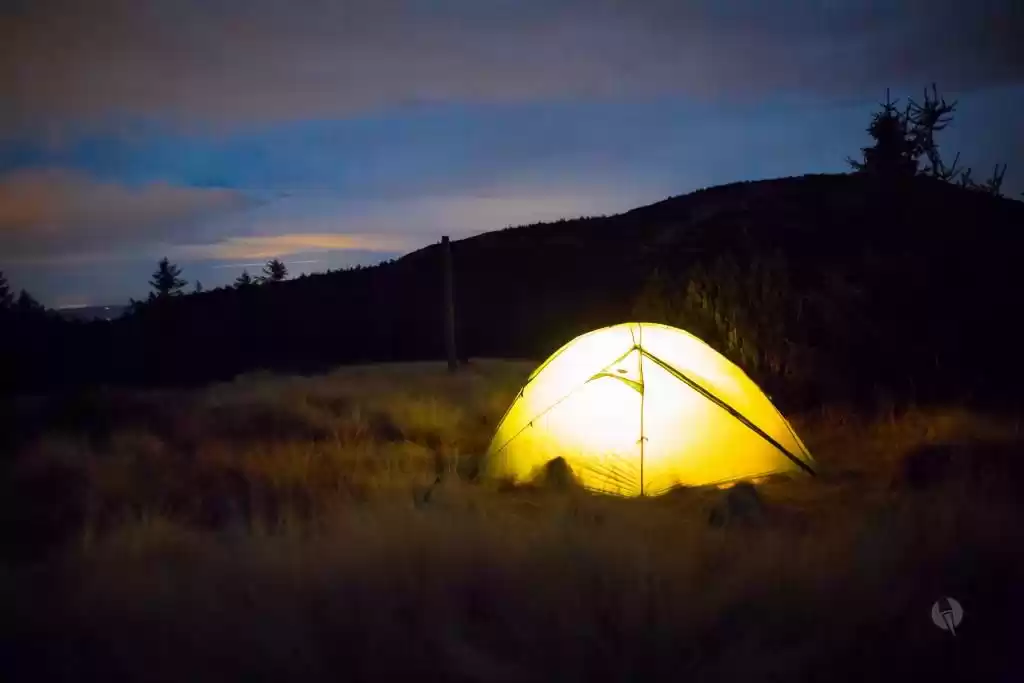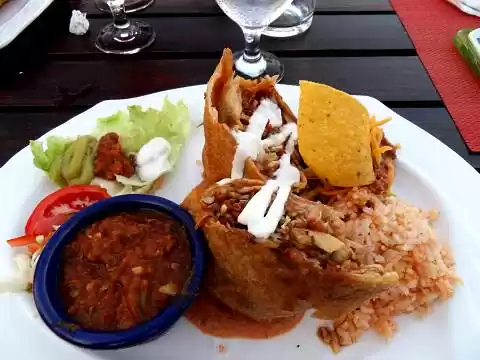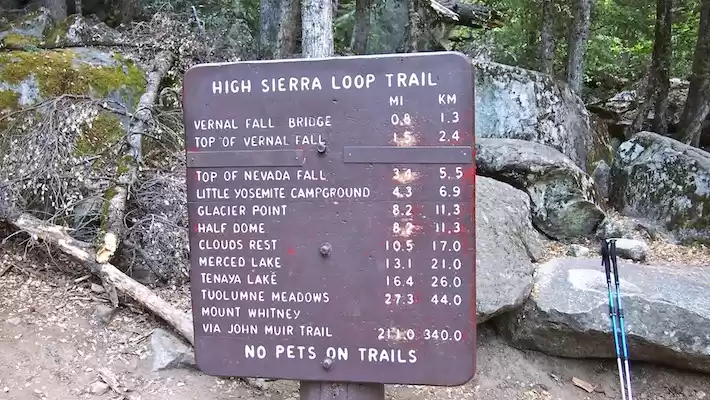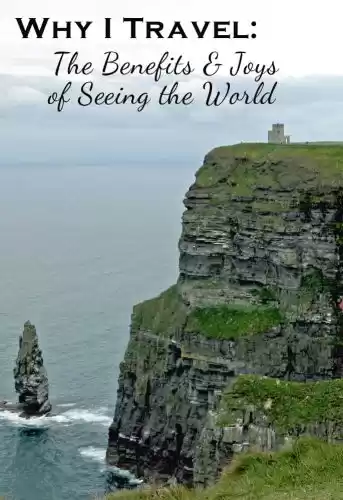

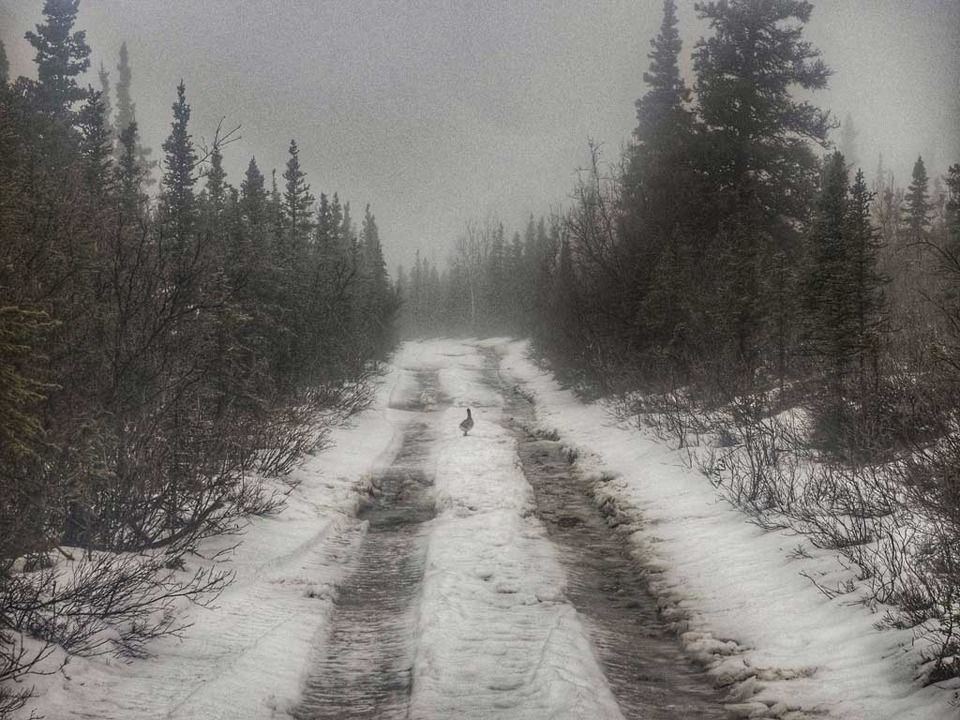

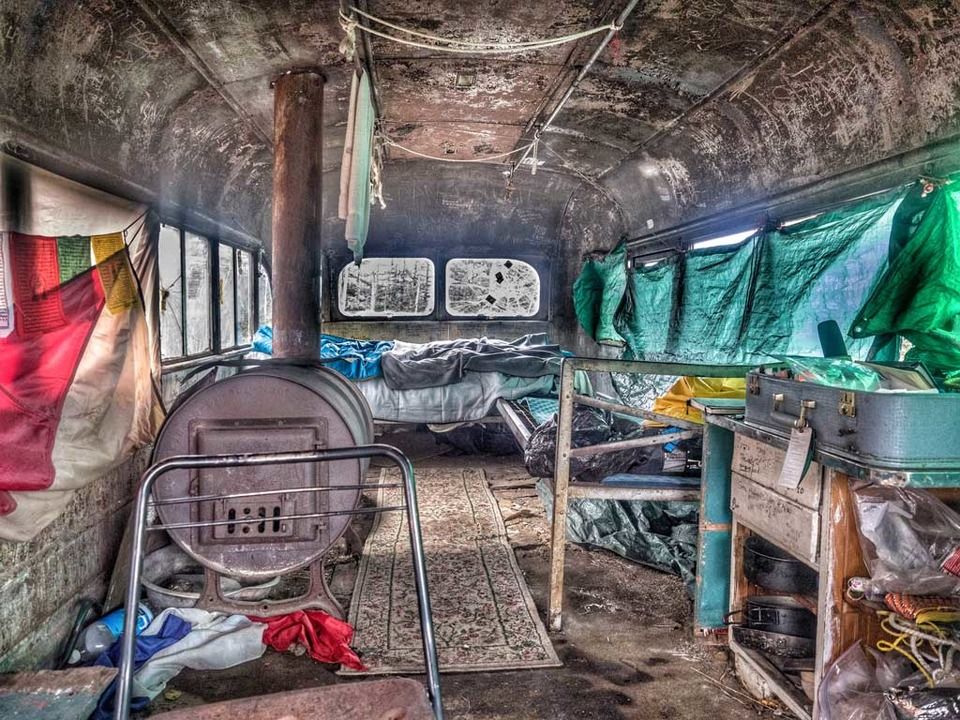



It’s dark when I reach the trail head which is as far as I can drive on Stampede Road. I make camp in the truck bed near 8mile lake. It’s cold. I’m testing my gear before I go. Bobby and I squeeze into a bivy sack. This sleeping bag isn’t warm enough, so I switch to a -10 degree bag I picked up from an army surplus store. Much better.
We wake up to fog and frozen ground. It’s 18 miles to the bus. I put on my boots and cover them with knee high gaiters. I’ve made some quick gear changes. My air mattress deflated so I will leave it behind. I’m carrying the -10 degree bag now. My pack is heavy. It’s too heavy, and I would guess it weighs at least 50lbs. In addition to my normal gear, I have a camera, 2 lenses, a rifle, and waders.
I’m an experienced hiker. I’ve hike thousands of miles solo but this is my first time in this type of environment so I want to be extra prepared. I know the rifle will do no good if I’m attacked on the trail, but I carry bear spray on my chest. It’s rumored to be more effective than a gun anyways. The rifle is for camp, and the comfort of my parents.
The Stampede Trail has a bad wrap. Granted it is dangerous, but like any backpacking trip it’s about knowing your ability. Knowing where to draw the line and not being to proud to admit when you need to turn around.
Just to give you an idea of my experience. I hiked the the entire Appalachian Trail solo, and know that 26-28 miles per day on rugged terrain is a good number for me. I’ve hiked up to 45 in a day, but that’s border line torture. The point is, I have a pretty good idea of what I can handle and that’s important on a trail like this. On any trail for that matter.
The trail is not particularly difficult, but there are sections where you could get in trouble easily. I will hike 18miles in, camp at the bus, and then hike 18 miles out. Just a 2 day trip. I have let some friends know and I will call them Saturday evening to confirm my safety. If things go bad, I have enough food and resources to stay an extra day or 2. You never know when you’re by your self. The Teklanika River is the most dangerous part. It’s the point of no return, and if it were to raise while I was at the bus I could be stuck waiting for it to go down.
A few miles in and the trail has become a creek. I put on my waders, crocs, and yak traks. Crocs don’t have very good traction and there has been a lot of ice. It just gets wetter. The trail opens up into a field of mud. Bobby grunts as we trudge through the quagmire.
The first river crossing in only about knee deep. That’s a good sign. I’ve drawn an imaginary line on my waiters. If it gets over this I’ll turn around. The deeper the water gets the more surface area it has to knock you down. If you fall, then it’s immediately into rescue mode. The waders will fill with water and if you can’t get them off, then you will drown. Not to mention, the pack, and the dog. I can’t stress how important it is to be aware of these dangers.
When we got to the Teklanika River we followed the tracks of a 4×4 further upstream where the river was wider and not as deep. The Teklanika river is big and you can immediately see the consequences. This is an extremely serious crossing. I don’t want to list a bunch of credentials qualifying me, but I love white water and have understand it’s power. We cross the river with out too much trouble. The freezing temperatures have been to our advantage. The river is glacier fed. If the glacier can’t melt, the water will be lower.
The rest of the trail is equally muddy. There are more hills, and I’m starting to feel fatigued. My shoulders hurt from the weight of the pack. My legs are sweating profusely from the waders. Bobby is a trooper. We are both ready to get to the bus. We make it at 5:30pm.
It’s quite a special experience but it’s not about the bus or the adventure. It’s so much more! For those who understand: the bus and Chris’ story offer hope. We all have our reasons for going. I’m all smiles when I walk in after trudging 18 miles through the snow, rivers, and quagmires. The road was hard but the reward is great. We are all on different paths and none of our stories are the same. Life’s not about following in another’s footsteps, but rather finding your on.
The walls, ceiling, and notebooks are filled with the memories and names of others. It impacts everyone differently. But the common thread seems to be the desire to truly live and the hope to live life to the fullest.
The bus feels like the punctuation mark to the first sentence of the rest of my life. This walk-a-bout I’ve been on has been more than I had hoped. It’s nice to find a direction, to set a goal, and to feel like you’re living.
We wake up sore but refreshed. The bed was surprisingly comfortable. It was not at all creepy, and for the moment the bus felt like home. It’s really indescribable. I won’t describe the hike back, but it was even harder. I was sore from the pack, my legs wanted rest, and blisters had formed on my feet. I lost my water filter somewhere along the trail about 12 miles from the end. Things weren’t ideal, but we made do. We hiked over half the trail in crocs and waders. Maybe, that’s why my feet hate me but the crocs are cool right?
There is a group of people who think the bus should be removed because of the number of people who have died or had to have emergency assistance while hiking to it.It makes me a little sad when I hear/read this. It really is a special place but not a hike for the inexperienced. If a person doesn’t know what it’s like to walk 50miles in cold wet miserable conditions, then it’s probably not for them. Bad things can definitely happen to the best of us but all we can do is prepare and research.
I don’t think everyone will find hope in the bus. Some may venture to it and find it’s really just a crummy old dilapidated bus. They will be forever disappointed and I imagine will add another bullet hole to it’s side. It’s not for them. It’s for the wanderers who want to be inspired. The introspective who know there is something more. The people drawn and inspired by the life Chris lived.
Thanks Chris for the inspiration. Your story has given a lot of people hope and I hope it will continue to do so for years to come!
This travelogue was first published by Dwayne Parton.

